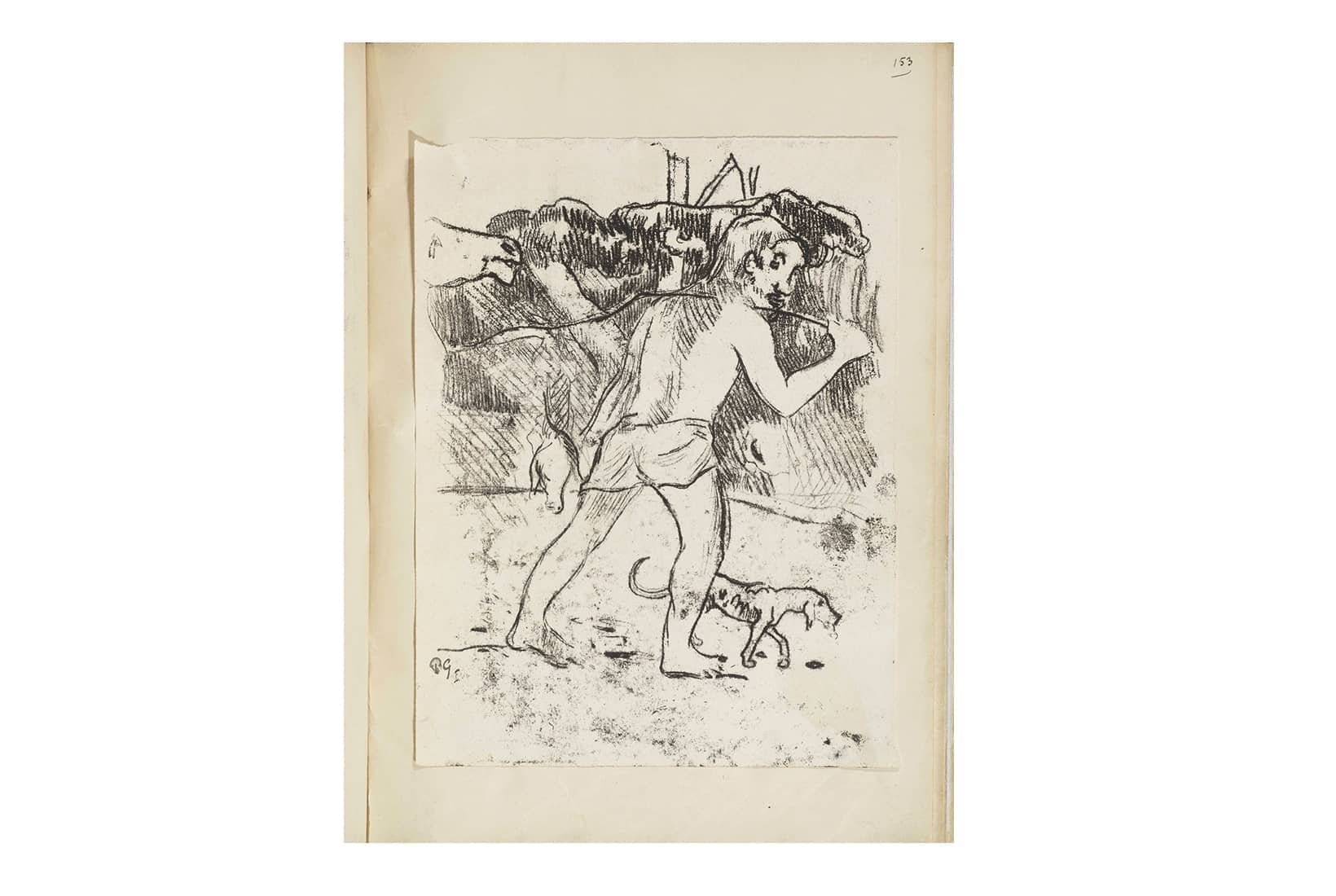‘This is not a book,’ is the first line of Paul Gauguin’s final memoir, Avant et Après, written on Hiva Oa in the Marquesas Islands in 1903 a couple of months before his death aged 54 from syphilitic heart disease. In his dedication to the critic André Fontainas he describes the manuscript as ‘born of solitude and savagery — idle tales of a naughty child who sometimes reflects and is always a lover of the beautiful’.
Fontainas failed to find a publisher as Gauguin had hoped, and although a facsimile appeared in 1918 it wasn’t until 1923 that the artist’s eldest son Émile had the memoir published in an English translation. The manuscript, meanwhile, was thought to be lost until it was offered last year under the government’s Acceptance in Lieu scheme to the Courtauld Gallery, which has now put it on display in its refurbished Great Room opposite Gauguin’s Tahitian paintings ‘Nevermore’ and ‘Te Rerioa’ and alongside a sensitive and surprisingly accomplished marble bust of his Danish wife Mette from the early years of their marriage.
Is Gauguin redeemable? By today’s standards, no. Would he want to be redeemed? Almost certainly not
Given what the Courtauld calls his ‘debated legacy’ — the charge sheet to date includes misogyny, sex tourism, paedophilia and cultural appropriation — the manuscript has baggage. What do you do with a problem like Gauguin? Since it’s impossible to tiptoe around him, my advice would be to take the monstre sacré by the horns and read his non-book.
A scroll-through version of the manuscript can now be found on the Courtauld website, along with a new translation of the text. I’m not sure why the gallery thinks this is needed as the Van Wyck Brooks original is perfectly good and, more importantly, includes a preface by Gauguin’s eldest son Émile that casts his father in an unusually sympathetic light.








Comments
Join the debate for just £1 a month
Be part of the conversation with other Spectator readers by getting your first three months for £3.
UNLOCK ACCESS Just £1 a monthAlready a subscriber? Log in